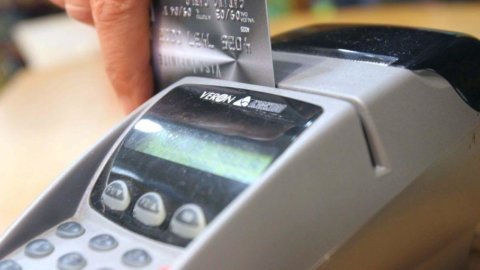If the current methods of paying for public transport services in the Milan metropolitan area and the Malpensa Express were accompanied by the possibility of paying with a contactless credit card directly at the turnstiles, this would result in an overall benefit of 200 million euros in ten years, according to the Certet Bocconi study in collaboration with MasterCard Payment instruments as levers for the development of a smart city. The case of transport services in metropolitan areas, presented today at Bocconi University.
The study examined the benefits that could derive from the integration of contactless technologies with the current payment methods for public transport services in the Milan metropolitan area and Malpensa Express.
The calculated benefit is divided between passengers, transport companies and the community, thanks to the environmental benefits deriving from the greater use of public transport, especially by non-systematic passengers.
The study also highlights how the implementation of a pilot project on the Malpensa Express which connects the airport with the Cadorna and Centrale stations would make it possible to increase passengers by 32%, thanks to the modal change compared to buses and taxis, linked to the strong simplification of ticketing.
The proposed intervention is similar to that developed by Transport for London since the end of 2014 and by the Gatwick Express since January 2016, with significant economic benefits for the community and a positive change in the perception of accessibility in the entire metropolitan area, thanks to the integration of MasterCard's contactless technology which innovated the Oyster system.
In particular, the experience of London shows that 18 months after the start of the project, contactless payments have been adopted by over 25% of non-systematic passengers.
"Our goal is to promote the creation of smart cities, inserting digital payments into their DNA, to improve efficiency and sustainability, and make cities safer and more accessible for citizens and tourists" - comments Paolo Battiston, Division President of MasterCard Italy & Greece – “MasterCard wants to be an active player in the modernization of Milan and of our whole country, thanks to our global experiences and our technological expertise. Making cities more sustainable creates solid foundations for future growth, with important benefits as highlighted by the Bocconi analysis”.
“Using contactless payment cards for these services is not a zero-sum game in which sales commissions pass from tobacconists or ATMs and ticket machines operated by transport companies to the banking system. In fact, these technologies reduce economic costs and increase the size of the transport services market,” says Oliviero Baccelli, Director of Certet Bocconi. "The greater the attention paid to the enhancement of technology to reduce downtime, the more public transport companies and non-systematic users earn, who in Lombardy, for example, are currently faced with 65 different tariff systems".
The work carried out by Certet Bocconi presents cost-benefit analysis in detail as a reference model for appreciating the social convenience of interventions of public importance. In particular, in the two cases examined, relating to the Milanese network (all the vehicles managed by ATMs and the urban section of the Passante) and the Malpensa Express, the investment and operating costs necessary to adapt the validators and turnstiles are analyzed, and the individual and external benefits are considered, expressed in terms of cost advantages for transport companies, time advantages for users and environmental advantages for the reference community.
The parameters used in the analyzes were taken from interviews with sector operators, from studies previously conducted by some members of the research team and from official EU documents and take into account the specific characteristics of Milan, which welcomes 7,2 million[ 1] of international tourists per year and sees 1,2 million2 non-routine passengers per day.
The benefit would be particularly significant in the case of the Malpensa Express: in fact, the limited costs of adjusting the turnstiles (about fifty in all) are accompanied by the prevalence of non-systematic passengers. It has been estimated that the new contactless payment system could attract an additional 648.000 train passengers a year; 20.458 passengers (56 per day) would be sufficient to cover all costs already in the first year. To promote the adaptation of the thousands of turnstiles of the urban network, however, a limited non-repayable public loan would be necessary, justified in any case by the collective benefits that would derive from it.





